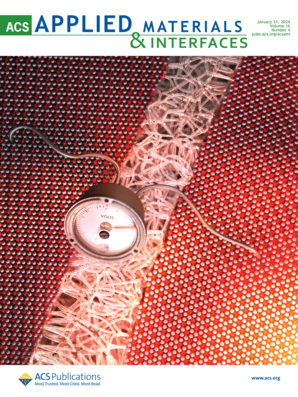Long-Gap Sciatic Nerve Regeneration Using 3D-Printed Nerve Conduits with Controlled FGF-2 Release.
IF 8.3
2区 材料科学
Q1 MATERIALS SCIENCE, MULTIDISCIPLINARY
引用次数: 0
Abstract
Peripheral nerve injuries (PNIs) by transection require reconstructive surgery, often with highly variable results and persistent sensory and motor deficits. Three-dimensional (3D) printing enables the biofabrication of nerve guidance conduits (NGCs) with the ability to release neurotrophic factors, showing therapeutic potential. We developed a 3D printing process of NGCs using polycaprolactone (PCL) and gelatin methacryloyl (GelMA) integrated with a thermostable fibroblast growth factor 2 (FGF-2). The synthesized GelMA at 10% (w/v) concentration showed superior rheological, mechanical, and ultrastructural characteristics, ensuring 3D printing fidelity. Incorporating FGF-2 into GelMA resulted in a controlled release pattern over 30 days along with biocompatibility and an increase of metabolism in rat S16 Schwann cells and human mesenchymal stem cells (MSCs). MSCs exhibited gene regulation linked to vascularization after FGF-2 stimulation. The PCL polymer facilitated the buildability of a spiral-patterned tubular structure, which was functionalized with a combination of GelMA and UV photocrosslinked. At 12 weeks, following a long-gap nerve injury in rats, NGC implantation enhanced sensory and motor recovery, improved electrophysiological function, and promoted morphological and ultrastructural nerve reorganization and regeneration. At 4 weeks, significant Schwann cell proliferation (S100), expression of the pan-neurotrophin receptor (P75NTR), myelination of newly grown axons, and organization of neurofilaments were observed. The bioactive NGCs represent a promising alternative to nerve autografts for the repair of long-gap injuries.利用3d打印神经导管控制FGF-2释放的长间隙坐骨神经再生。
周围神经损伤(PNIs)横断需要重建手术,往往具有高度可变的结果和持续的感觉和运动缺陷。三维(3D)打印使神经引导导管(NGCs)的生物制造具有释放神经营养因子的能力,显示出治疗潜力。我们开发了一种使用聚己内酯(PCL)和明胶甲基丙烯酰(GelMA)结合耐热成纤维细胞生长因子2 (FGF-2)的NGCs 3D打印工艺。在10% (w/v)浓度下合成的GelMA具有优异的流变学、力学和超微结构特性,确保了3D打印的保真度。将FGF-2掺入GelMA后,在大鼠S16雪旺细胞和人间充质干细胞(MSCs)中具有超过30天的可控释放模式,同时具有生物相容性和代谢增加。MSCs在FGF-2刺激后表现出与血管形成相关的基因调控。PCL聚合物促进了螺旋状管状结构的可构建性,该结构通过GelMA和UV光交联的组合实现功能化。在大鼠长间隙神经损伤后12周,NGC植入可促进感觉和运动恢复,改善电生理功能,促进神经形态和超微结构的重组和再生。在第4周,观察到显著的雪旺细胞增殖(S100),泛神经营养因子受体(P75NTR)的表达,新生长的轴突有髓鞘形成,神经丝组织。具有生物活性的NGCs是修复长间隙损伤的一种有希望的替代神经自体移植物。
本文章由计算机程序翻译,如有差异,请以英文原文为准。
求助全文
约1分钟内获得全文
求助全文
来源期刊

ACS Applied Materials & Interfaces
工程技术-材料科学:综合
CiteScore
16.00
自引率
6.30%
发文量
4978
审稿时长
1.8 months
期刊介绍:
ACS Applied Materials & Interfaces is a leading interdisciplinary journal that brings together chemists, engineers, physicists, and biologists to explore the development and utilization of newly-discovered materials and interfacial processes for specific applications. Our journal has experienced remarkable growth since its establishment in 2009, both in terms of the number of articles published and the impact of the research showcased. We are proud to foster a truly global community, with the majority of published articles originating from outside the United States, reflecting the rapid growth of applied research worldwide.
 求助内容:
求助内容: 应助结果提醒方式:
应助结果提醒方式:


